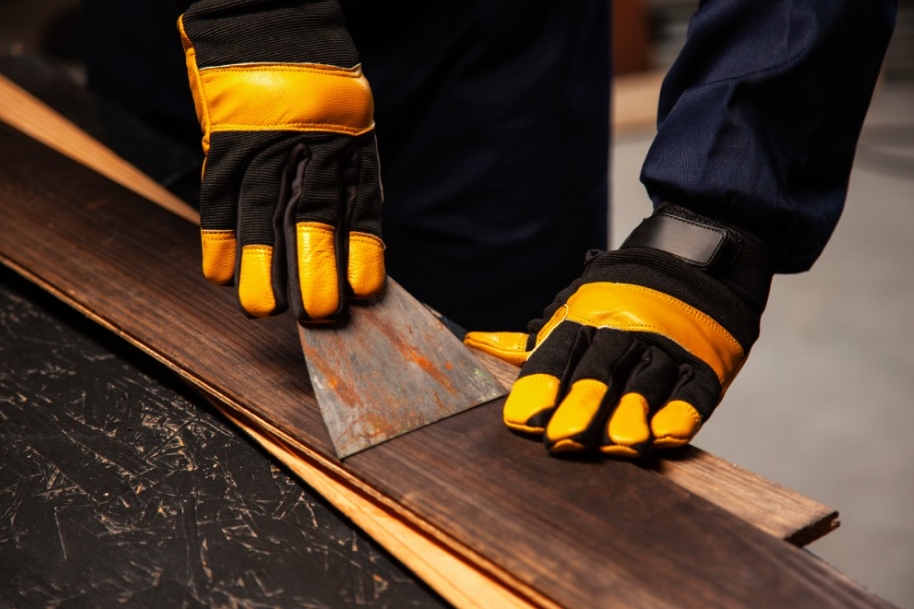When working in industries that involve sharp tools, heavy machinery, or hazardous materials, protecting your hands is crucial. A simple mistake can lead to severe injuries, downtime, and even permanent damage. This is why choosing the right cut protection gloves is essential for safety and productivity.
Whether you work in manufacturing, construction, automotive, or food processing, selecting the right gloves can make all the difference. As a professional or business owner, investing in high-quality gloves from a trusted rubber glove manufacturer ensures that your workers are well-protected and compliant with industry standards.
Understanding Cut Resistance Levels
Not all cut protection gloves are created equal. Different materials and designs offer varying levels of protection. The American National Standards Institute (ANSI) and the European EN 388 standard classify cut resistance levels to help users select the appropriate gloves for their work environment. These standards use numerical ratings to indicate the glove’s ability to withstand sharp objects.
The ANSI system, for example, uses a scale from A1 to A9, with A1 offering the least protection and A9 designed for extreme cut hazards. Similarly, EN 388 ratings for cut resistance are determined using two methods: the Coup Test and the EN ISO 13997 Test. In the Coup Test, cut resistance is rated from 1 to 5, where higher numbers indicate better protection. In the EN ISO 13997 Test, cut resistance is rated with letters from A to F, with F offering the highest level of protection.
Before purchasing, evaluate the level of risk in your workplace and choose a glove that meets or exceeds the required standard.
Materials That Provide Cut Resistance
The effectiveness of cut-resistant gloves largely depends on the materials used in their construction. Some of the most commonly used materials include:
- Kevlar™ – This lightweight yet highly durable material is resistant to cuts and heat, making it ideal for a variety of industrial applications.
- Dyneema™ – Known for being 15 times stronger than steel, Dyneema provides excellent protection without sacrificing dexterity.
- HPPE (High-Performance Polyethylene) – This material offers a high level of cut resistance while maintaining flexibility and comfort.
- Nitrile coated, Neoprene coated, or Polyurethane coated gloves – These coatings enhance grip and durability, making gloves more resistant to abrasions and punctures.
Understanding the material used in your gloves can help you select the best option for your specific work environment.
Factors to Consider When Choosing Cut Protection Gloves
1. Type of Work Environment
The environment in which you work determines the level of protection you need. For example:
- Construction workers handling glass or metal sheets require high cut resistance.
- Food industry workers may require food compliance gloves with enhanced cut resistance to protect against accidental cuts when handling sharp objects.
- Automotive and manufacturing workers benefit from HPPE or Kevlar-based gloves for enhanced protection and dexterity.
2. Comfort and Dexterity
Wearing gloves should not restrict your hand movements. Flexibility, fit, and comfort are important factors, as gloves that are too bulky can reduce efficiency and make tasks more difficult. Look for gloves with ergonomic designs that allow for easy hand movement while maintaining strong protection.
3. Grip and Coating
The right coating enhances grip, durability, and resistance to oils or chemicals. Some of the most effective coatings include:
- Foam Nitrile – Provides superior grip and is ideal for handling wet or oily materials.
- Polyurethane – Lightweight and flexible, allowing for better dexterity and precision handling.
- Latex – Offers excellent grip in dry conditions but may cause allergic reactions for some users.
- Flat Nitrile Coating – Offers a good balance of grip, durability, and protection, making it suitable for a variety of applications.
- Neoprene Coating – Provides excellent resistance to oils, chemicals, and heat, offering a high level of protection in demanding environments.
4. Durability and Longevity
Investing in high-quality gloves reduces replacement costs and ensures long-term protection. Look for gloves that are tear-resistant, washable, and built to withstand harsh conditions without losing their protective properties.
5. Compliance with Safety Standards
Ensure that the gloves you choose comply with ANSI, EN 388, or other relevant industry safety standards. This ensures that they have been tested for performance and meet the necessary safety regulations.
Common Mistakes to Avoid When Choosing Cut Protection Gloves
1. Choosing the Wrong Cut Resistance Level
Using gloves that provide insufficient protection can lead to serious injuries, while overly protective gloves may reduce efficiency and dexterity. Assess your risks properly before selecting the right level.
2. Ignoring Proper Fit
Gloves that are too tight can cause discomfort and reduce hand flexibility, while loose gloves can increase the risk of accidents. Always select the right glove size for optimal performance.
3. Overlooking Coating and Grip Requirements
Not all gloves offer the same grip, and using the wrong coating can result in handling difficulties, especially in oily or wet conditions. Choose coatings that enhance grip based on your work environment.
4. Neglecting Maintenance and Care
Even the best cut-resistant gloves won’t last if they’re not properly maintained. Regularly inspect gloves for wear and tear, clean them according to manufacturer instructions, and replace them when necessary.
Conclusion
Selecting the best cut protection gloves is essential for maximising safety, productivity, and compliance in any high-risk work environment. By considering cut resistance levels, material composition, comfort, grip, and durability, you can ensure that your hands are well-protected from potential hazards.
Whether you work in construction, manufacturing, or food processing, investing in high-quality gloves from a reliable and trusted manufacturer can significantly reduce the risk of hand injuries. Make an informed choice and prioritise safety in your workplace today.




























